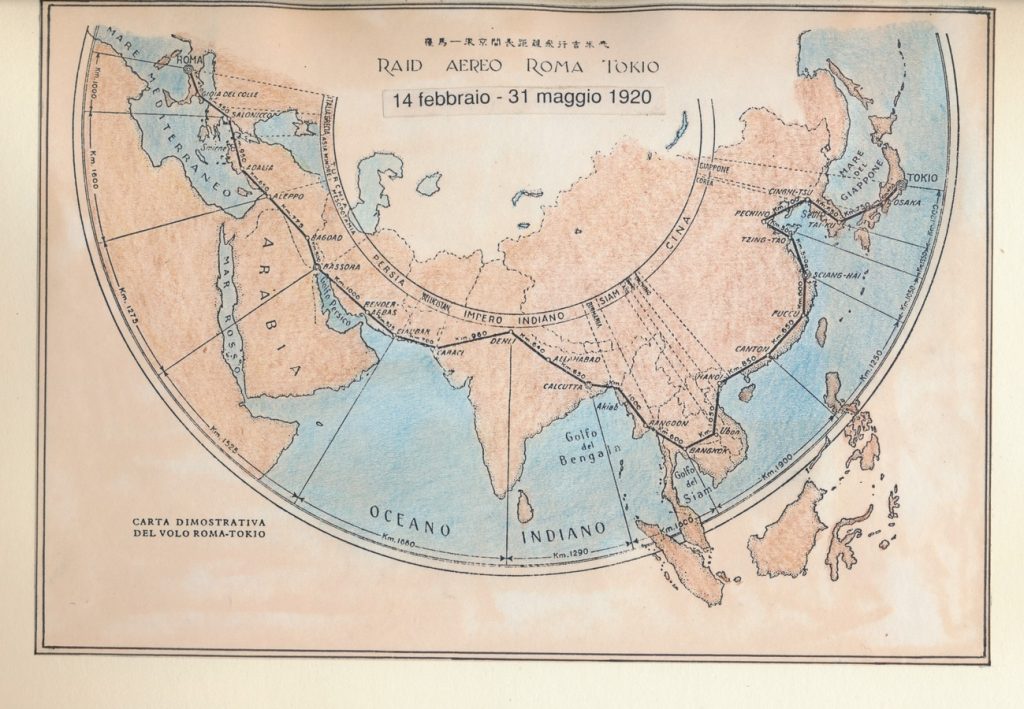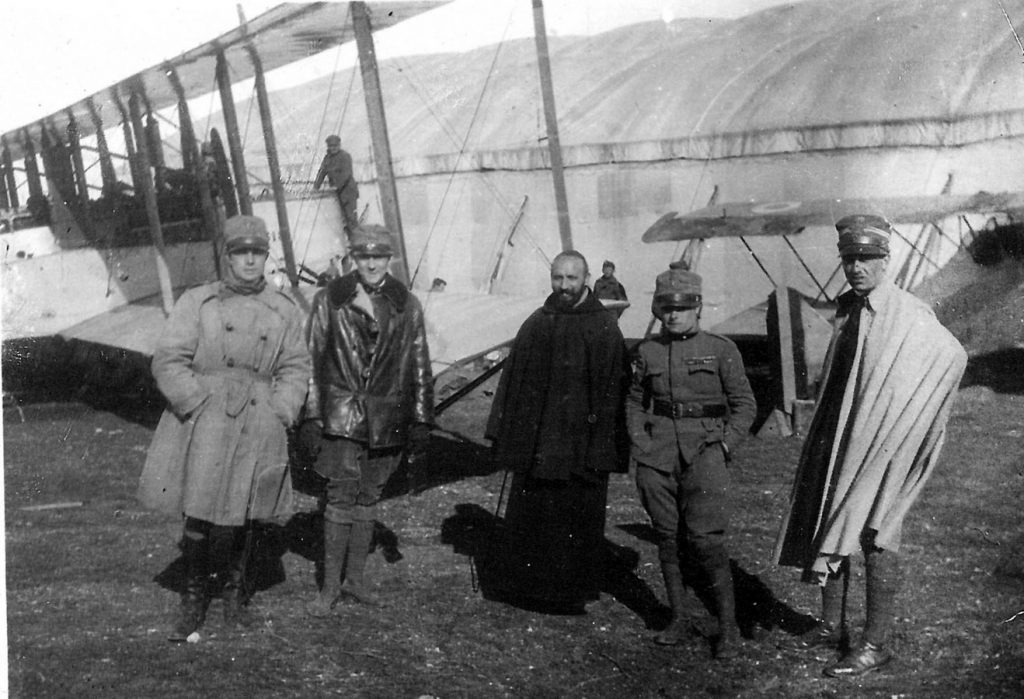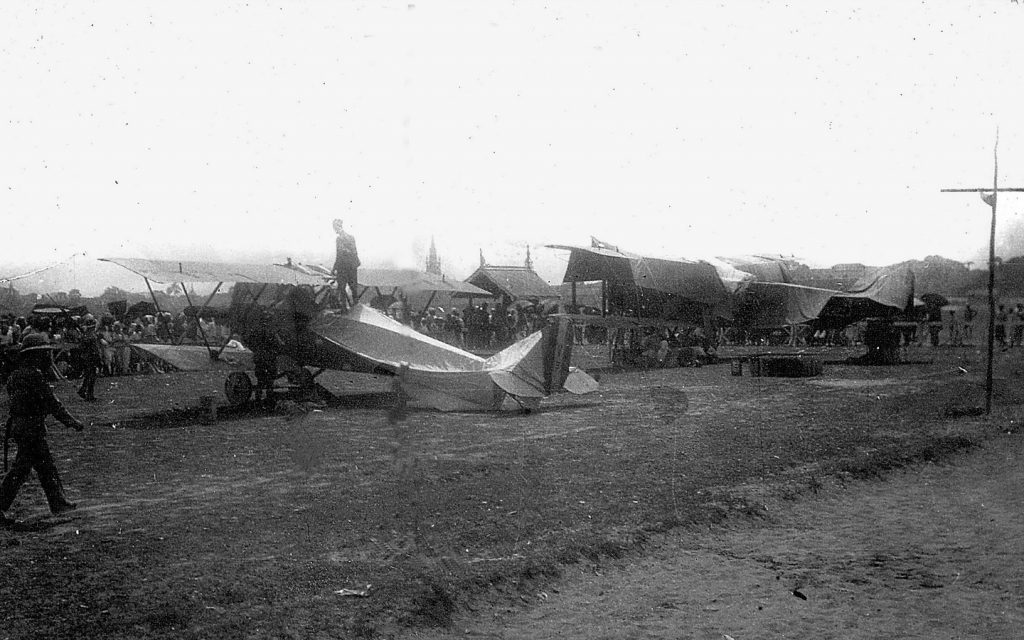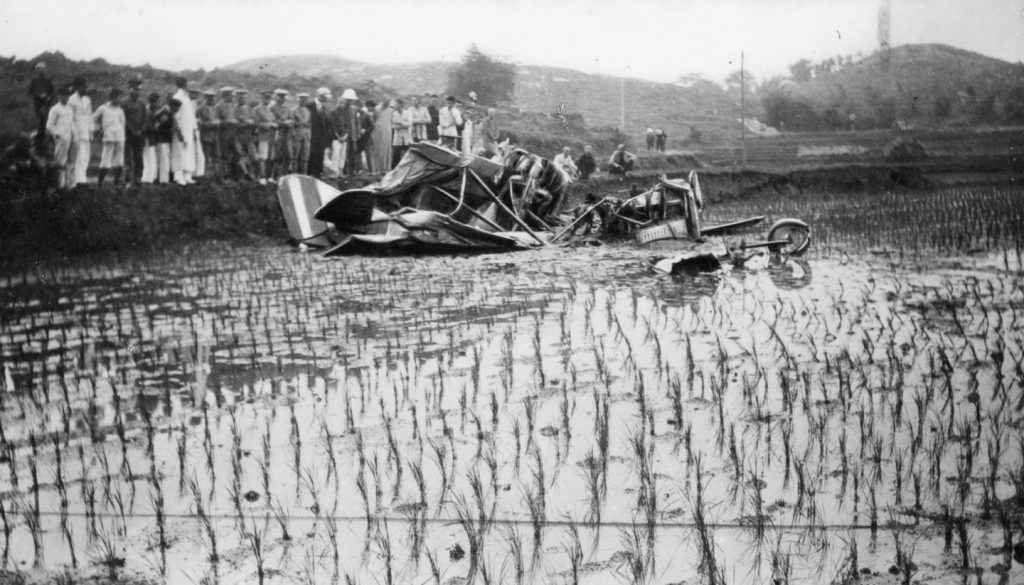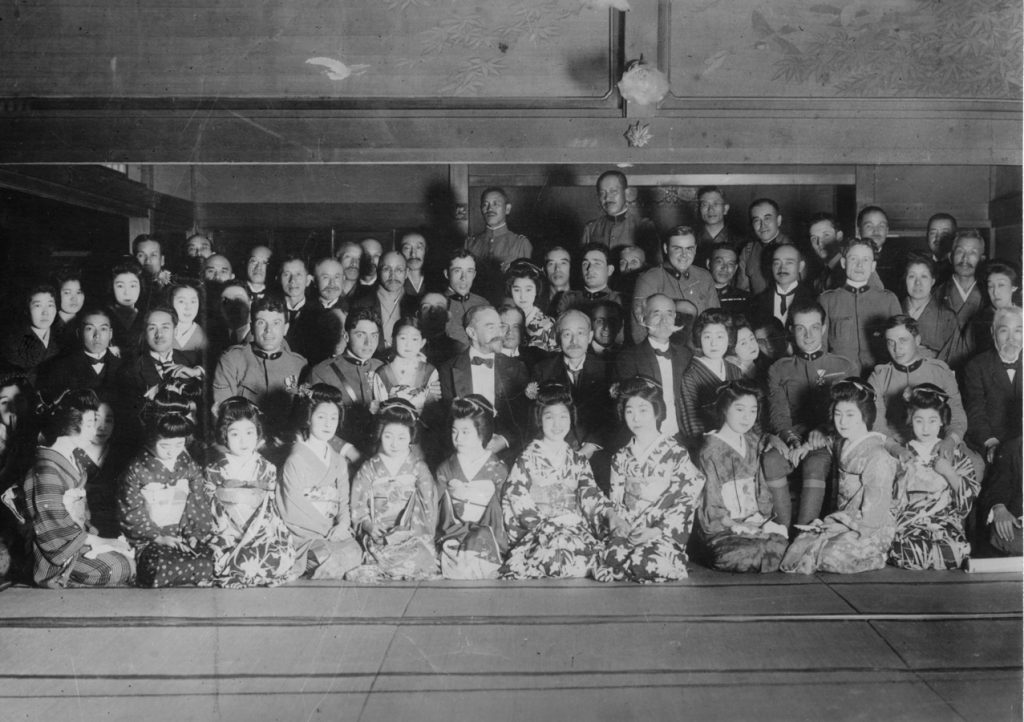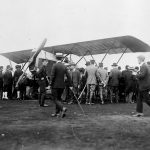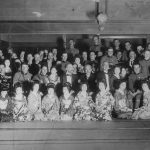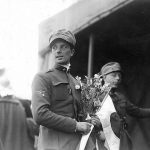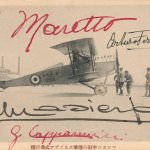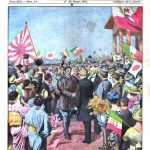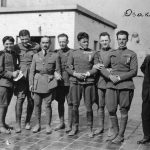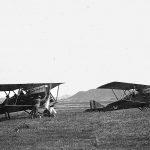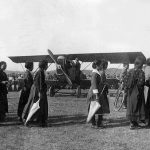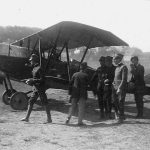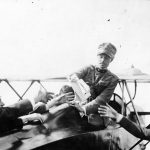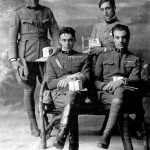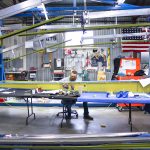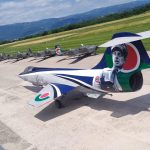by Luigino Caliaro
Over the course of 2020, celebrations will take place commemorating the centenary for an aviation event of exceptional magnitude in its day, and a noteworthy moment in Italian aeronautical history. In 1920, on Valentines Day, two Ansaldo SVA biplanes took off from the runway at Centocelle aerodrome in Rome, Italy. The fragile fabric and wood flying machines were at the start of an epic, 15 week-long adventure, with their ultimate destination being more than 6,000 miles away in Tokyo, Japan. This was an unprecedented feat in 1920; the two pilots Arturo Ferrarin and Guido Masiero, accompanied by engine mechanics Gino Cappannini and Roberto Maretto, headed off into the unknown, awaiting an uncertain fate.
The peculiar circumstances which resulted in this historic flight date from the closing days of WWI, when the poet Gabriele D’Annunzio, honorary commander of the 87^ Squadriglia “Serenissima” suggested that the squadron’s pilots should launch an ambitious long-range flight from Italy to Japan. In reality, D’Annunzio, conscious of the valor in his pilots and the capabilities of the Ansaldo SVA which the Squadriglia flew, had developed the concept for this flight with his friend, the Japanese poet Haruki-KichiShimoi. The flight, at its heart was simply a patriotic gesture intended to “promote and celebrate the name of Italy in that far off country and bring prestige to the numerous Italians who lived there,” but it was also an inspiration to many around the world. The flight would also represent an excellent advertisement for Italy’s aviation industry too, which was in despair following numerous post-war contract cancellations.
Keen for adventure, D’Annunzio’s proposal quickly gained consensus amongst the pilots of the Serenissima. Tenenti Locatelli and Francesco Ferrarin (the cousin of Arturo Ferrarin) had the task of preparing the flight. However, Gabriele D’Annunzio, along with many of his fellow pilots, soon switched their attention to the cause of Fiume, a self-declared free city state with a heavy Roman influence which existed briefly in Croatia on Italy’s northeastern border between 1920 and 1924. Nevertheless, Italy’s Government and Comando di Aviazione (Air Force Command) decided to continue planning for the mission to Tokyo, making a sum of 20 million Lire available (an exorbitant amount for the period), and preparing the technical stops along the planned route where the aircraft could refuel and undergo maintenance. This was not to be a simple flight, it involved many, many stops along the way, which in turn required significant logistical planning.
The aircraft selected for the flight included three Caproni biplane bombers (two Ca.3 and a Ca.5) and a Ca.4 triplane, together with five single-seat Ansaldo SVA 9 biplanes. Four additional aircraft were to be pre-positioned as reserves at some of the technical stops along the route. Interestingly, Arturo Ferrarin was not originally intended to take part in the flight; he learned of the preparations by chance while engaged in a series of demonstration flights in Paris. Quickly attracted by the undertaking, he asked to join the mission at a very late stage. He was surprised, therefore, when the organizers granted his request. However, this was only on the condition that he would be ready to leave within seven days, even though the official departure date for the five SVAs was a month away. This limited available time was insufficient to enable an adequate and specific preparation. The Aeronautica proposed that Ferrarin fly an Ansaldo A5 biplane on the journey, but the pilot rejected the type due to his belief that its flying characteristics were unsuitable. He successfully persuaded the flight’s organizers to allow him to fly the same aircraft type as his friend Guido Masiero and engineer Roberto Maretto. Ferrarin chose the engine mechanic Gino Cappannini as his traveling companion,.
Ferrarin originally came from Thiene in the province of Vicenza, while Masiero was from nearby Padova. The two pilots selected the two-seat Ansaldo SVA 9 as their aircraft of choice. The type had a fuel capacity of 400 litres, which afforded around eight hours’ endurance, covering distances of just over 1,000 km. Unfortunately, just two days prior to his scheduled departure, Ferrarin’s aircraft was badly damaged in a landing accident with another pilot at the controls. The Italian thus found himself without a plane, however his cousin Francesco sprang to his assistance, suggesting that Arturo use his aircraft which was stored at Centocelle. However, the SVA was not in the best of condition to confront such a long and difficult flight, as Ferrarin would later write in his autobiography: “The aircraft that was assigned to me was old and worn out. The original 220 hp engine had been replaced with one with reduced compression that could not develop more than 180 hp. This had been obtained through the expedience of positioning a plate between the engine shaft and the cylinders. This improved its functional reliability, but the take-off, with reduced power, seemed to be much more risky. Furthermore, the aircraft’s fuel tanks could hold no more than 300 litres of fuel, in contrast with the 440 litres carried by the other SVA, thus reducing the endurance from ten and a half hours to just eight. It was also necessary to patch the holes in the wings, change the tyres, the undercarriage elastic, and to realign the wings. The aircraft, which furthermore suffered from airframe distortion, has a tendency to yaw to the left, which forced me to constantly hold the control column over to the right to compensate for this defect. To facilitate this, I attached a belt to the left hand cockpit wall for the duration of the flight.”
In the meantime, between January 8th and February 1st, the Caproni bombers left in waves, since they were notably slower than the SVA. Following the original intentions for the flight, plans called for meeting the five SVA biplanes, after having traversed Asia, for a joint formation over Tokyo, possibly with the bombers as well – hence their earlier departure. The mission was divided into well-defined legs. Having departed Centocelle on February 14th, 1920, Ferrarin and Masiero followed their planned route, with pre-arranged landings at airfields where pre-positioned Italian personnel could provide the necessary technical support for the aircraft. However, all of the Caproni bombers had to interrupt their mission early on following landings at airfields with terrain unsuitable for operation, or due to severe technical difficulties.
The flight of five Ansaldo SVAs which left Centocelle on March 11th was as unlucky as the Caproni bombers were, and suffered numerous technical issues which quickly delayed their mission. After gradual attrition, just one aircraft in this flight, flown by Ranza, managed to make it as far as India before it too was forced to drop out after a take-off accident. Ferrarin and Masiero’s two-ship flight soldiered on, however it was no less adventurous than the other flights, and suffered numerous interruptions. The two pilots from the Veneto started their journey from Centocelle, as previously noted, on 14 February 1920 and made an initial stop at Gioia del Colle. They departed the following day for Salonica, but adverse weather forced them to stop over at Valona, delaying their arrival at the Greek city for another day. Ferrarin had to replace his SVA with one of the reserves after arriving in Calcutta, India. Instead of departing straight away for Tokyo, however, Ferrarin and Masiero were ordered, inexplicably, to await the arrival of the other SVA formation (the five-ship), but of course, this never actually happened. After twenty seven days of waiting for news without reply, Ferrarin and Masiero, without the authorization of senior officers, decided to depart again and headed off for their next stage in Rangoon, Burma.
After Rangoon came Bangkok, Hanoi, Canton, Foochow, and Shanghai, where Ferrarin stopped over for seven days. The successive leg to Tsing-Taowas was very difficult due to the arrival of a typhoon; this created many problems during the flight. The flight to Peking (Beijing), however, represented an enormous success, and here the men arrived to a triumphal reception. The final phase of the mission was now approaching. The following legs quickly brought the Italian crews to Kowangtze, Shingishu and Seoul in Korea. Despite technical problems and adverse weather, with ability, audacity and not a little good fortune (Masiero among other events crashed his second SVA while taking off from Canton, miraculously emerging unhurt from the wreckage along with his engineer Maretto), Ferrarin and Cappannini, flying in SVA no. 13148, managed to set their wheels down on Japanese territory near Osaka on May 30th. They were greeted by an immense crowd and local dignitaries.
Shortly after Ferrarin arrived, Masiero also flew in, having collected a new reserve SVA at Shanghai, thereby confirming the success of the flight. On the following day, the two SVA 9 took off for Tokyo where, despite the appalling weather conditions, they found another massive crowd awaiting them. While Masiero’s aircraft arrived first, he was technically disqualified since he and his engineer had made the trip between Canton and Shanghai by sea due to the take-off accident in Canton. However, Arturo Ferrarin, despite changing aircraft in Calcutta, had effectively completed all of the flight’s planned legs. Despite the fact that no other participant in the mission managed to arrive in Japan due to technical problems with their aircraft or accidents (one of which tragically claimed the lives of pilots Gordesco and Grassa), the success of the mission was a clamorous triumph for Italian aviation and industry. These delicate biplanes had managed to fly roughly 18,000 km (11,120 miles) on the journey between Rome and Tokyo at an average of 160 km/h, covering the entire route in the air over 112 hours. This performance was highly respectable for 1920!
Arturo Ferrarin’s triumph was widely celebrated in Tokyo, where he was declared to be a Japanese hero and invested as a samurai, the highest honor in the nation. However, Ferrarin’s welcome back home in Italy was decidedly different. The enormous expenditure incurred during the voyage resulted in political acrimony which somewhat diminished their exceptional achievement. It also contributing partly to the fall of the Nitti government. The subsequent administration, led by Giovanni Giolitti, did not afford any particular value to the undertaking; it took several years before its merits received justifiable recognition. Only Thiene, Ferrarin’s native city, afforded the hero the honors he richly deserved. They organized numerous celebrations and awarded him the keys to the city. On his return, Ferrarin would noted the particular problems encountered during the flight, stating: “In my opinion, some of the problems encountered during the flight could have been avoided by better mission planning. Above all, the de-rated engine was not sufficient for an aircraft that was essentially operating overweight due to the length of the legs. In fact, not being able to, and not wanting to overload the engine, I never achieved, during the entire voyage, an altitude of two thousand metres, while the take-off was made equally demanding, and I requested landing strips of particularly large dimension, which were not always easy to find. The take-offs were also made difficult when the terrain was not completely dry, as the wheels easily sank in due to the reduced dimensions of the tyres. The undercarriage itself was not sufficiently robust to be subjected to the shocks from operations off not particularly well prepared terrain. The fuselage, being the thickness of just three sheets of plywood, had to be continually repaired, as it was unable to withstand the heavy night time humidity and the intense heat of the day. Another negative aspect was the poor logistical organisation of the numerous technical stops, with runways which were badly prepared or not adequately signalled. This aspect, moreover, was connected to the inadequate selection of the personnel tasked with managing the airstrips, as in some cases their support was minimal and lacking in any initiative or competence. In some cases (at Calcutta and Delhi) I found no-one waiting for me, despite having confirmed the date and timing of my arrival. (These problems were almost certainly caused by communication difficulties between the air strips). The Ansaldo SVA 9 which Ferrarin used for the flight was subsequently donated, again not without controversy, to the Japanese government, which displayed it at the Imperial War Museum in Tokyo. Although the Italian government had initially given instructions that the aircraft should be sold off to the best offer, Ferrarin, commenting on the aircraft’s performance during the voyage, noted its condition (in his autobiography) at the conclusion of the mission: “My poor aircraft had been reduced to a miserable state. The wings were rotten and the fuselage was deformed, with the metal parts corroded, and I was convinced that by them, that marvelous and much loved aircraft, lacking the most elementary accessories to permit flight in such a difficult climate, was only suitable to be placed into a museum. Before taking my leave, I wrote a goodbye on a section of the wing, which was already covered in signatures and comments, as a final salute: my faithful friend”.










